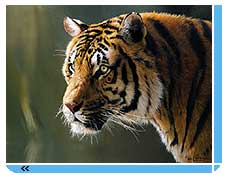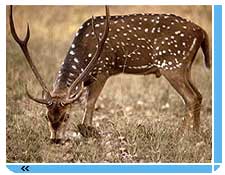|
|
 |
fonte lactis ubertim manante: atque aundante opis egentissimum et illoa dhuc uno alimento vitam ucentemon sortem non pati. sed blande tole ran tur haec, non quia . |
| read more>> |
|
|
 |
fonte lactis ubertim manante: atque aundante opis egentissimum et illoa dhuc uno alimento vitam ucentemon sortem non pati. sed blande tole ran tur haec, non quia . |
| read more>> |
|
|
 |
fonte lactis ubertim manante: atque aundante opis egentissimum et illoa dhuc uno alimento vitam ucentemon sortem non pati. sed blande tole ran tur haec, non quia . |
| read more>> |
|
| |
|

|
India Tours -
Wildlife Tourism of Chhattisgarh
|

Indravati National Park is the finest and most famous wildlife parks of Chhattisgarh. Also the only Tiger Reserve in the state, Indravati National Park is located in Dantewada district of Chhattisgarh. The Park derives its name from the Indravati River, which flows from east to west and forms the northern boundary of the reserve with the Indian state of Maharashtra. With a total area of approximately 2799.08 sq km, Indravati attained the status of a National Park in 1981 and a Tiger Reserve in 1983 under the famous Project Tiger of India to become one of the most famous tiger reserves of India. The topography of the Park mainly comprises of undulating hilly terrain with altitude ranging between 177 to 599 m above the sea level. The Park is famous for its unique and diverse wildlife and bird species including some of the most endangered species such as Wild Buffalos and Hill Mynas. A series of beautiful hill ranges with lush green vegetation and unique and varied wildlife make Indravati National Park a must visit for wildlife enthusiasts and nature lovers.
Flora and Fauna - Indravati National Park
The flora in the Indravati National Park is mainly comprises of tropical moist and dry deciduous type with predominance of the Sal, Teak and Bamboo trees. There are also rich patches of excellent grasslands providing much required fodder to Wild buffalos, Chital, Barking Deer, Nilgai, Gaurs and other herbivores of the park. The most commonly found trees in the park are Teak, Lendia, Salai, Mahua, Tendu, Semal, Haldu, Ber and Jamun. The major wildlife in Indravati National Park include the endangered Wild Buffalos, Barasinghas, Tigers, Leopards, Gaurs (Indian Bison), Nilgai, Sambar, Chausingha (four-horned Antelope), Sloth Bear, Dhole (Wild Dog), Striped Hyena, Muntjac, Wild Boar, Flying Squirrel, Porcupine, Pangolins, Monkeys and Langurs among many others. The commonly found reptiles in the park are Freshwater Crocodile, Monitor Lizard, Indian Chameleon, Common Krait, Indian Rock Python, Cobra and Russell's Viper to name a few. The Park also gives shelter to the large variety of birds of which Hill Maina is the most important species here.
Best Season to Visit - Indravati National Park
The best season to visit the Park is from 15th December to 15th June.
How to Reach - Indravati National Park
Indravati National Park is easily approachable from Jagdalpur, the district head quarter of Bastar. The village Kutrue, the main entry point of the park, is situated at the distance of 22.4 km north of Jagdalpur- Bhopalpattanam road. The Kutrue link road is at the distance of 145.6 km from Jagdalpur. Raipur (486 km) is the nearest airport and Jagdalpur (168 km) is the nearest railhead from the Indravati National Park. |

Sitanadi Wildlife Sanctuary
Located in Dhamtari district of Chhattisgarh, Sitanadi Wildlife Sanctuary is one of the most famous and important wildlife sanctuaries in central India. Established in 1974 under Wildlife Protection Act of 1972, the sanctuary covers an area of approximately 556 sq km, comprising of highly undulating and hilly terrain with altitudes ranging between 327-736 mts. The beautiful sanctuary derives its name from the Sitanadi River that originates in the middle of sanctuary and joins Mahanadi River near Deokhut. Sitanadi Wildlife Sanctuary is known for its lush green flora and rich and unique and diverse fauna and has great potential to emerge as one of the finest wildlife destinations in central India.
Flora and Fauna - Sitanadi Wildlife Sanctuary
The flora in Sitanadi Wildlife Sanctuary chiefly comprises of moist peninsular Sal, Teak and Bamboo forests. Other major plants in the sanctuary include Semal, Mahua, Harra, Ber and Tendu. The rich and lush vegetation cover supports a wide variety of wildlife in the sanctuary. The major wildlife found in Sitanadi Sanctuary include Tigers, Leopards, Flying Squirrels, Jackals, Four-horned Antelopes, Chinkara, Black Buck, Jungle Cat, Barking Deer, Porcupine, Monkey, Bison, Striped Hyena, Sloth Bear, Wild Dogs, Chital, Sambar, Nilgai, Gaur, Muntjac, Wild Boar, Cobra, Python among many others. The sanctuary also has a sizable bird population with prominent being the Parrots, Bulbul, Peafowl, Pheasant, Crimson Breasted Barbet, Teetar, Tree Pie, Racket-tailed Drongos, Egrets, and Herons to name few. Sitanadi Sanctuary is also being prepared to develop it as an important tiger sanctuary in the region. A visit to Sitanadi sanctuary promises to be an exciting and unforgettable experience for all wildlife enthusiasts and nature lovers.
Best Time to Visit - Sitanadi Wildlife Sanctuary
The best time to visit the Sitanadi Wildlife Sanctuary is November-June.
How to Reach - Sitanadi Wildlife Sanctuary
The sanctuary is at a distance of about 173 km from state capital Raipur which is also the nearest airport. Dhamtari Railway Station (95km) is the nearest railhead from Sitanadi Sanctuary. The place is easily approachable through the Raipur-Deobhog State Highway.

|
|
|







